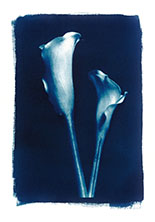 Sir John Frederick William Herschel, 1st Baronet, (March 7, 1792 – May 11, 1871) was an English polymath, mathematician, astronomer, chemist, inventor, and experimental photographer, who in some years also did valuable botanical work.
Sir John Frederick William Herschel, 1st Baronet, (March 7, 1792 – May 11, 1871) was an English polymath, mathematician, astronomer, chemist, inventor, and experimental photographer, who in some years also did valuable botanical work.
He was the son of Mary Baldwin and astronomer William Herschel and the father of twelve children.
Herschel made numerous important contributions to photography. He made improvements in photographic processes, particularly in inventing the cyanotype process and variations (such as the chrysotype), the precursors of the modern blueprint process. In 1839, he  made a photograph on glass, which still exists, and experimented with color reproduction, noting that rays of different parts of the spectrum tended to impart their own color to a photographic paper. Herschel made experiments using photosensitive emulsions of vegetable juices, called phytotypes and published his discoveries in the Philosophical Transactions of the Royal Society of London in 1842. He collaborated in the early 1840s with Henry Collen, portrait painter to Queen Victoria. Herschel originally discovered the platinum process on the basis of the light sensitivity of platinum salts, later developed by William Willis.
made a photograph on glass, which still exists, and experimented with color reproduction, noting that rays of different parts of the spectrum tended to impart their own color to a photographic paper. Herschel made experiments using photosensitive emulsions of vegetable juices, called phytotypes and published his discoveries in the Philosophical Transactions of the Royal Society of London in 1842. He collaborated in the early 1840s with Henry Collen, portrait painter to Queen Victoria. Herschel originally discovered the platinum process on the basis of the light sensitivity of platinum salts, later developed by William Willis.
Herschel coined the term photography in 1839. He may, however, have been preceded by Brazilian Hércules Florence, who used the French equivalent, photographie, in private notes which one historian dates to 1834. Herschel was also the first to apply the terms negative and positive to photography.
Herschel wrote many papers and articles, including entries on meteorology, physical geography and the telescope for the eighth edition of the Encyclopædia Britannica. He also translated the Iliad of Homer.
He invented the actinometer in 1825 to measure the direct heating power of the sun’s rays, and his work with the instrument is of great importance in the early history of photochemistry.
He proposed a correction to the Gregorian calendar, making years that are multiples of 4000 not leap years, thus reducing the average length of the calendar year from 365.2425 days to 365.24225. Although this is closer to the mean tropical year of 365.24219 days, his proposal has never been adopted because the Gregorian calendar is based on the mean time between vernal equinoxes (currently 365.2424 days).